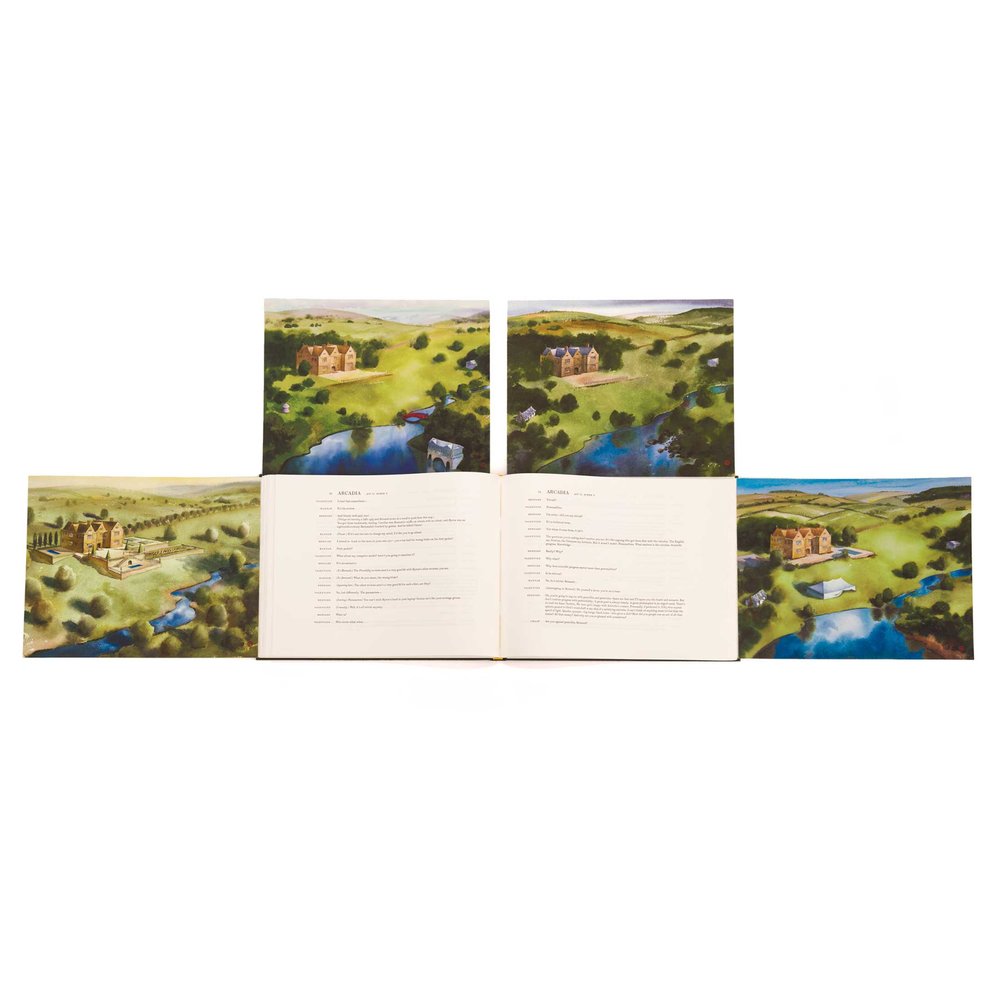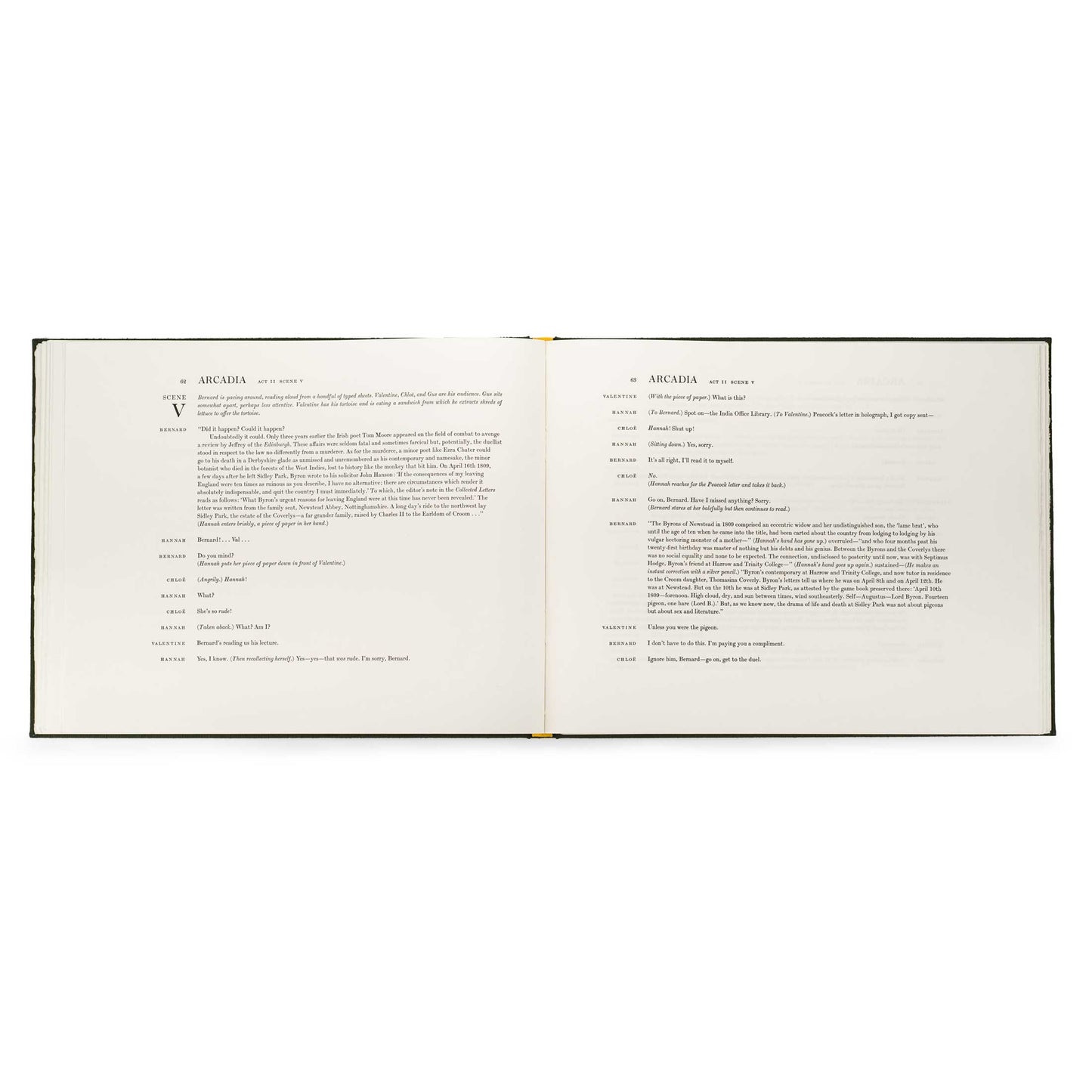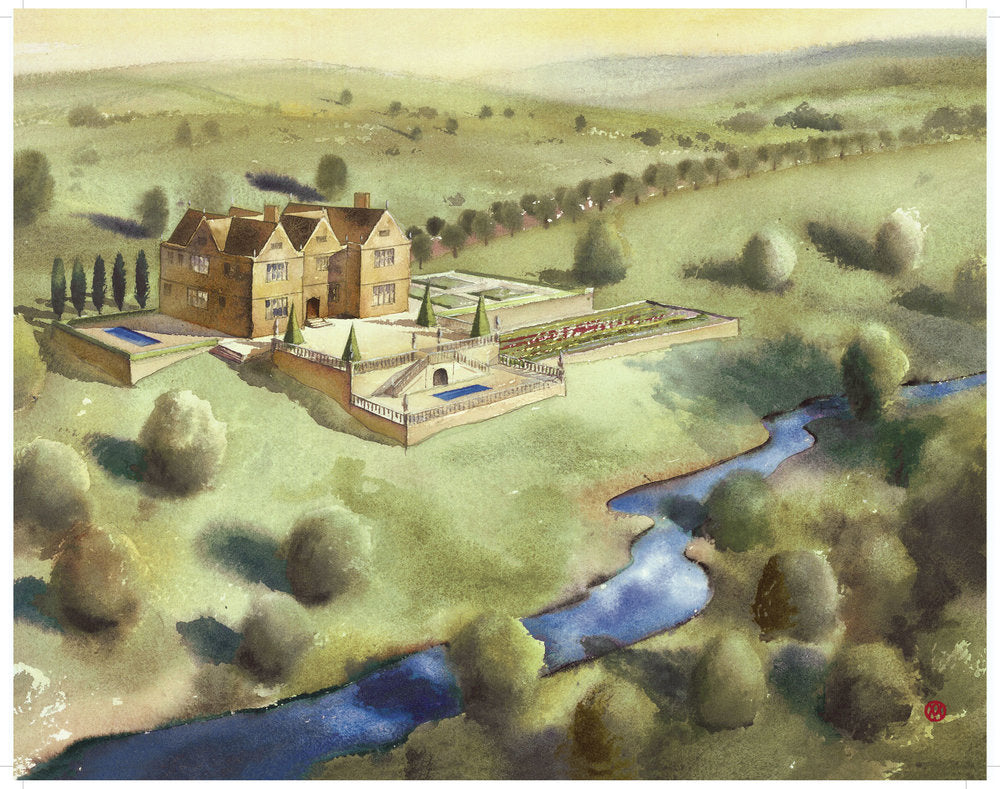Arcadia
Arcadia
By Tom Stoppard, with a foreword by the playwright, an introduction by Diana Ketcham, and four views of Sidley Park by William Matthews, signed by the artist, 2001, book plus suite. $3,250.00
Publication 62
ADD TO CARTArcadia is a masterwork of contemporary English drama, considered by many as the finest play by Tom Stoppard, whose work New York Times critic Clive Barnes has called "unrivaled in today's English-speaking theater". In the country-house play tradition, Arcadia begins in 1809 in the schoolroom of Sidley Park, the seat of the Coverly family, where Lord and Lady Croom are entertaining a set of poets and intellectuals that includes the historical figure Lord Byron. Episodes alternate in Sidley Park between 1809-1812 and the present, nearly two centuries later, among the Croom descendants. The plot interweaves elements of the murder mystery with bedroom farce, here a situation comedy about marital discord over remodeling the family garden. Stoppard displays his fascination with chaos theory, which his characters bring to bear on their arguments over such subjects as Newtonian determinism and the Classic versus the Romantic. The teenage prodigy Thomasina Coverly tries to prove Fermat's Last Theorem, a legendary problem in mathematics. Although the proof had eluded science since the seventeenth century, a solution was coincidentally announced a few months after the opening of Arcadia.
The landscape format and fold-out illustrations are an allusion to the presentation books of the garden designer Humphrey Repton, referred to in the stage directions for the play. The illustrations show the reader the larger setting for the play, exterior to the stage set, referred to but unseen by the audience. The illustrations are presented in an unusual manner, allowing the book to be displayed with all four illustrations on view at once while pages from the dialogue are open as well. This device also allows the reader to follow the changes in the physical setting for the play, the landscape of Sidley Park in Derbyshire, over two hundred and sixty years. The introductory essay is by Diana Ketcham. Her introduction elucidates the intellectual debate that runs through Arcadia, and in a section entitled "Notes on the Landscape" she identifies the fashions in the English garden over the period covered by the play.
FORMAT
Oblong, 11 by 14 inches, 132 pages. The types are Monotype Scotch Roman (introduced around 1810, during the earlier time of the play), composed and cast at Mackenzie & Harris; and handset Lilith, designed by Lucien Bernard in 1930. Printing of the text was by letterpress. The paper is mouldmade Zerkall. The illustrations were printed by Urban Digital Color in continuous tone, using a Roland Digital Pigment Printer, on mouldmade Somerset paper. The four prints fold out from the insides of the cover, two from the front, two from the back. The books are handsewn and bound in boards covered with green Japanese cloth and are presented in a slipcase with cloth edges and paper sides. The edition is limited to 400 numbered copies signed by the playwright and the artist. The extra suite of larger prints by William Matthews, "Four Views of Sidley Park", with each print numbered, titled, and signed by the artist. The prints are presented in a portfolio. Suite of four larger prints with the book: edition of 50. The book and prints are only available together.
POSTAGE: Additional postage may apply; please inquire for details.
Share





